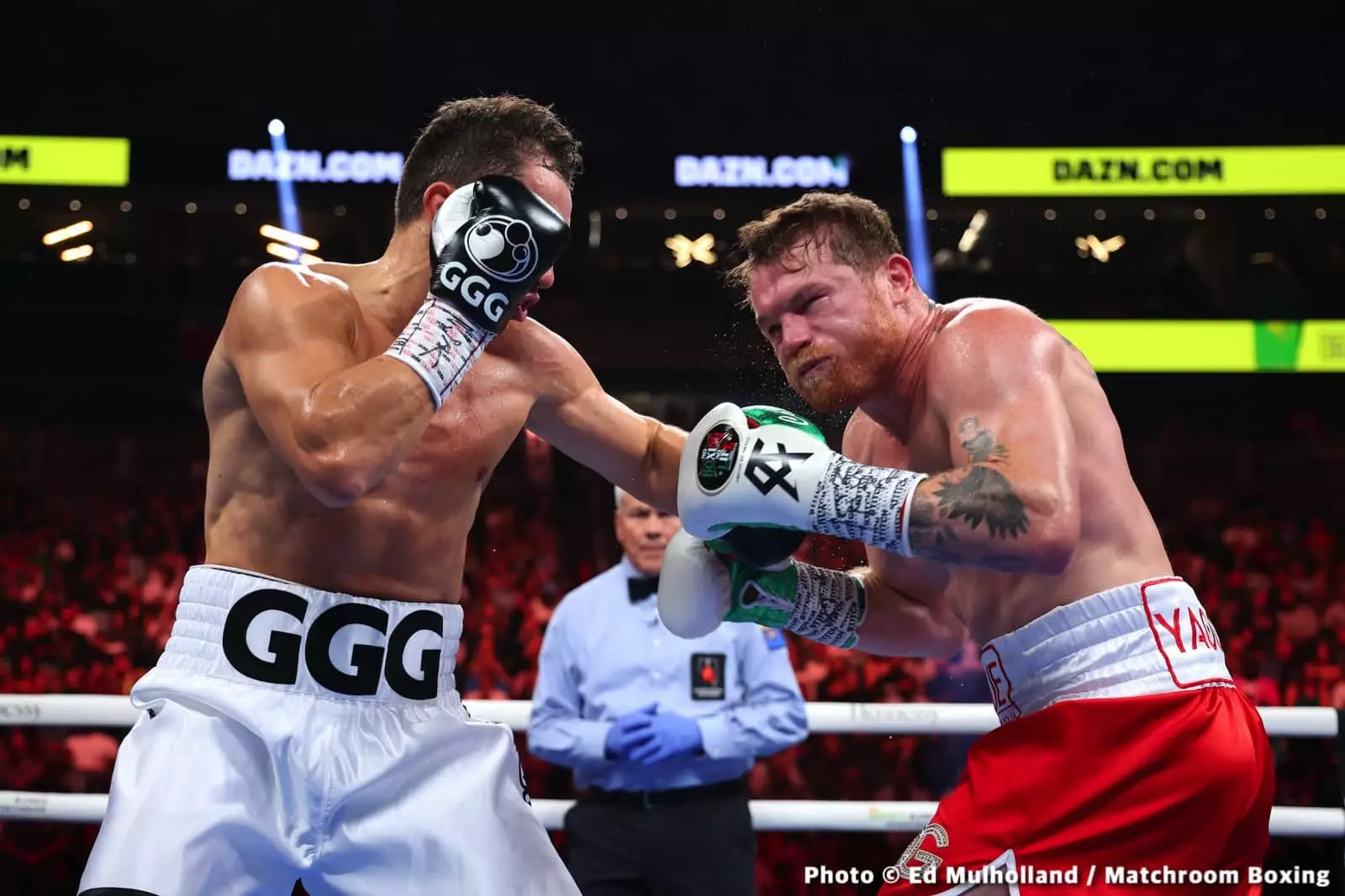In the ever-evolving landscape of boxing, technical mastery often takes center stage, overshadowing perhaps the most decisive element: raw power. While skill, speed, and agility are undeniably vital, they can be rendered irrelevant when confronted with a fighter who can hit harder, withstand an onslaught, and impose physical dominance. Trainer Abel Sanchez’s candid assessment highlights a fundamental flaw in Terence Crawford’s approach to his upcoming clash with Canelo Alvarez. His analysis underscores that without sufficient punching power, even the most polished technical fighter may find himself at a severe disadvantage against a relentless, physically imposing opponent like Canelo.
Crawford, celebrated for his slick boxing ability and exceptional ring IQ, risks becoming a shadow of himself if he neglects the power aspect. Sanchez’s perspective reveals that Crawford’s current physical state and punching capability are inadequate when pitted against a fighter of Canelo’s caliber. This challenges the conventional narrative that skill alone can neutralize strength and power, suggesting instead that they are inseparable in determining the outcome of high-stakes bouts.
Body Development and Power: The Missing Links
One of the most glaring issues Sanchez points out is Crawford’s lack of body development suitable for 168 pounds. Moving up divisions is not merely about weight; it’s about transforming one’s physiology to withstand and deliver impactful punches consistently. Sanchez alludes to Crawford’s recent performance at 154 pounds, where his success was largely due to volume and speed rather than raw power. He was effectively fighting at a weight class below his current division, which naturally hampers his capacity to deliver knockout blows against larger, stronger opponents.
Building muscle and strength is a slow, deliberate process requiring time, proper training, and disciplined nutrition. Crawford’s rapid ascent to 168 without these developmental steps puts him at a physical disadvantage. Gennadiy Golovkin, for example, is a prime case of how natural strength and a powerful punch can dominate at middleweight and supermiddleweight levels. His ability to control the ring and neutralize opponents through sheer force is a testament to how power can define a fighter’s career. Crawford’s current trajectory, Sanchez argues, falls short in this crucial area, making it unlikely he can replicate Golovkin’s muscle-based dominance.
The Power Gap: Golovkin vs. Crawford
Golovkin’s legacy as a puncher surpasses Crawford’s in both raw force and sustained strength. Sanchez emphasizes that Golovkin’s physicality was a defining element that allowed him to hold off Canelo and dictate the pace of their fights. His power was so formidable that Canelo, despite his own skill and resilience, had to take calculated risks to land his own shots, often paying the price. Crawford, lacking Golovkin’s knockout punch and physical presence, could find himself unable to keep Canelo at bay long enough to implement his technical game plan.
This gap in power is not a mere technicality but a fundamental characteristic that shapes a fighter’s ability to impose control and secure victory. Sanchez succinctly states that Crawford’s skill set cannot substitute for Golovkin’s punching force. Without it, Crawford may be forced into a more aggressive, possibly reckless approach—fighting on Canelo’s terms instead of dictating his own. The absence of Golovkin-like power puts Crawford at risk of falling into Canelo’s trap: engaging in exchanges that favor the more resilient, physically dominant opponent.
The Risks of Rushing the Division Transition
Crawford’s quick move up to 168 pounds is a strategic gamble that could backfire spectacularly. While it’s tempting to view this jump as a sign of ambition, Sanchez believes that the lack of adequate preparation undermines the entire endeavor. Fighters need time to rebuild their physiques, adapt their strength, and learn how to carry the extra weight without losing their core skills. Skipping these crucial steps can turn a fighter into an ill-matched version of himself, lacking the necessary explosiveness and durability.
Crawford’s decision to forego tune-up fights at the new division further complicates matters. Deprived of a gradual acclimation process, he risks entering the ring with a body still unaccustomed to the demands of higher weight classes. As Sanchez argues, this rush has transformed Crawford into a less formidable version of Golovkin rather than a unique contender in his own right. If power is the currency that buys respect in the ring, Crawford’s current valuation is significantly underwhelming—and Canelo, a seasoned powerhouse himself, will capitalize on that weakness.
The Greater Implication: Power as a Cornerstone of Boxing Success
This analysis ultimately challenges the notion that skill, speed, and ring IQ alone can define greatness in boxing. Historically, fighters like Golovkin, Mike Tyson, and George Foreman remind us that lethal power can elevate a boxer’s career beyond mere technical proficiency. Crawford’s path, as Sánchez notes, is hindered not by deficiency in talent but by a critical missing piece—power that can turn a contest’s tide in an instant.
As the fight draws nearer, the spotlight intensifies on whether Crawford can overcome this power disparity. His fight plan needs to account for not just outboxing Canelo but also resisting his powerful counterpunches and relentless pressure. Without that physical advantage, Crawford’s technical skill may be rendered moot—relegated to a show of elegance that lacks the knockout punch or the intimidating presence necessary to truly challenge Canelo’s dominance.
In boxing, power remains an undeniable force—a trait that often makes or breaks careers. Crawford’s challenge is to develop that strength quickly and effectively, but Sanchez’s critique makes one thing clear: without it, his chances are slim, and history favors the fighters who possess the brutal, unmatched force that can silence even the most skilled opponents.

